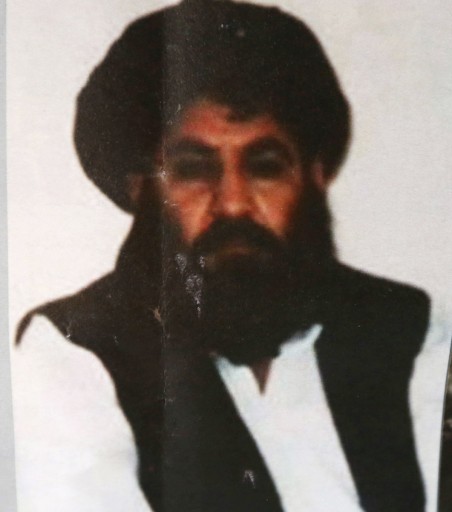 Afghanistan – The U.S. targeted Taliban leader Mullah Mansour in an airstrike Saturday near the Afghanistan-Pakistan border, the Defense Department said, and a U.S. official said Mansour was believed to have been killed.
Afghanistan – The U.S. targeted Taliban leader Mullah Mansour in an airstrike Saturday near the Afghanistan-Pakistan border, the Defense Department said, and a U.S. official said Mansour was believed to have been killed.
Subscribe to our Daily Roundup Email
Pentagon press secretary Peter Cook said the U.S. was still studying the results of the attack, essentially leaving Mansour’s fate uncertain.
But one U.S. official said Mansour and a second male combatant accompanying him in a vehicle were probably killed. President Barack Obama authorized the attack, which occurred on the Pakistani side of the border, and was briefed before and after it was carried out, a White House aide said. Both officials spoke on condition of anonymity and were not authorized to discuss the operation publicly.
Mansour was chosen to head the Afghan Taliban last summer after the death several years earlier of the organization’s founder, Mullah Mohammad Omar, became public. The Taliban is the most powerful insurgent group in the war-ravaged country, where an estimated 11,000 civilians were killed or wounded and 5,500 government troops and police officers died last year alone.
Cook said Mansour has been “actively involved with planning attacks” across Afghanistan. He called Mansour “an obstacle to peace and reconciliation” between the Taliban and the Afghan government who has barred top Taliban officials from joining peace talks, which have produced few signs of progress.
Members of Congress lauded the attack. One lawmaker said Mansour’s death, if confirmed, would be a significant blow to the Taliban, though not enough to allow the U.S. to disengage from a conflict that has involved thousands of U.S. troops for nearly 15 years.
“We must remain vigilant and well-resourced in the field, and must continue to help create the conditions for a political solution,” said Rep. Adam Schiff of California, top Democrat on the House Intelligence Committee.
Senate Armed Services Committee Chairman John McCain, R-Ariz., said he was glad Mansour “has met his just end” but urged stepped up coalition attacks on the Taliban.
“Our troops are in Afghanistan today for the same reason they deployed there in 2001 — to prevent Afghanistan from becoming a safe haven for global terrorists,” McCain said.
The U.S. official said Saturday’s attack was carried out by unmanned aircraft operated by American Special Operations Forces. The official said the operation was launched at about 6 a.m. EDT southwest of the town of Ahmad Wal and caused no other damage because it occurred in an isolated region.
Mansour, Mullah Omar’s longtime deputy, had been the Taliban’s de facto leader for years, according to the Afghan government.

His formal ascension was divisive in the Taliban, handing him the challenge of uniting a fractured — but still lethal — insurgency that has seen fighters desert for more extreme groups such as the Islamic State.
The Taliban seized power in 1996 and ruled Afghanistan according to a harsh interpretation of Islamic law until the group was toppled by a U.S.-led invasion following the Sept. 11, 2001, attacks on New York and Washington, D.C.
Almost 15 years later, there are about 13,000 troops in the country from a U.S.-NATO coalition, including around 9,800 Americans. While they are mostly focused on training and helping Afghan government forces battle the insurgency, about 3,000 of them are conducting counterterrorism operations against the Taliban and the extremist groups al-Qaida and Islamic State.
Mansour is considered close to Pakistani authorities who hosted peace talks last year between the Taliban and Afghan government. His succession widened the internal split between fighters who want to use battlefield gains to strengthen the Taliban’s hand in negotiations with Kabul and those who want to continue the insurgency and ultimately overthrow the Afghan government.
Mullah Omar was the one-eyed, secretive head of the Taliban, whose group hosted Osama Bin Laden’s al-Qaida in the years leading up to the Sept. 11 attacks and then waged an insurgency after the 2001 U.S.-led invasion that ended Taliban rule.
It is widely believed that Mullah Omar fled over the border to Pakistan, where he lived under Pakistani protection until his death.
According to the Taliban, as Mullah Omar’s deputy, Mansour was effectively running the insurgency for the past three years and is said to have the loyalty of battlefield commanders who have intensified and spread their insurgency against Kabul in recent months.

Next!